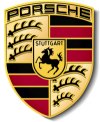
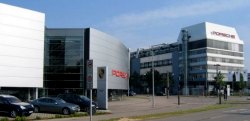 Headquarters: Zuffenhausen of Stuttgart
Headquarters: Zuffenhausen of StuttgartR&D center: Weissach
Production plants: Zuffenhausen (911, Boxster, Cayman), Leipzig (Panamera, final assembly of Cayenne, Macan)
Production contracted to Volkswagen: Osnabruck (Boxster, Cayman), Bratislava (Slovakia) (main assembly of Cayenne)
2023: 320,221 units (911: 50,146; 718: 20,518; Macan: 87,355; Cayenne: 87,553; Panamera: 34,020; Taycan: 40,629)
2022: 309,884 units (911: 40,410; 718: 18,203; Macan: 86,724; Cayenne: 95,604; Panamera: 34,142; Taycan: 34,801)
2021: 301,915 units (911: 38,464; 718: 20,502; Macan: 88,362; Cayenne: 83,071; Panamera: 30,220; Taycan: 41,296)
2020: 272,162 units (911: 34,328; 718: 21,784; Macan: 78,124; Cayenne: 92,860; Panamera: 25,051; Taycan: 20,015)
2019: 280,800 units (911: 34,800; 718: 20,467; Macan: 99,944; Cayenne: 92,055; Panamera: 32,721; Taycan: 813)
2018: 256,255 units (911: 35,573; 718: 24,750; Macan: 86,031; Cayenne: 71,458; Panamera: 38,443)
2017: 246,375 units (911: 32,197; 718: 25,114; Macan: 97,202; Cayenne: 63,913; Panamera: 27,942)
2016: 237,778 units (911: 32,365; 718: 23,620; Macan: 95,642; Cayenne: 70,867; Panamera: 15,240)
2015: 225,121 units (911: 31,350; Boxster/Cayman: 22,663; Macan: 80,216; Cayenne: 73,119; Panamera: 17,207; 918 Spyder: 566)
2014: 189,849 units (911: 30,510; Boxster/Cayman: 23,597; Macan: 44,636; Cayenne: 65,941; Panamera: 24,864; 918 Spyder: 301)
2013: 162,145 units (911: 30,205; Boxster/Cayman: 25,704; Cayenne: 84,204; Panamera: 22,032)
2012: 143,096 units (911: 26,203; Boxster/Cayman: 11,740; Cayenne: 77,822; Panamera: 27,331)
2011: 116,978 units (911: 17,607; Boxster/Cayman: 11,280; Cayenne: 59,873; Panamera: 28,218)
2010: 96,473 units (911: 20,406; Boxster/Cayman: 12,348; Cayenne: 40,237; Panamera: 23,482)
FY2009/10: 81,850 units (911: 19,663; Boxster/Cayman: 11,717; Cayenne: 29,855; Panamera: 20,615)
FY2008/09: 76,739 units (911: 27,776; Boxster/Cayman: 14,403; Cayenne: 32,640; Panamera: 1,920)
FY2007/08: 98,652 units (911: 31,423; Boxster/Cayman: 21,747; Cayenne: 45,478)
FY2006/07: 97,515 units (911: 37,415; Boxster/Cayman: 26,146; Cayenne: 33,943)
FY2005/06: 96,794 units (911: 34,386; Boxster/Cayman: 27,906; Cayenne: 34,134; Carrera GT: 368)
FY2004/05: 88,379 units (911: 27,826; Boxster: 18,009; Cayenne: 41,884; Carrera GT: 660)
FY2003/04: 76,827 units (911: 23,704; Boxster: 12,988; Cayenne: 39,913; Carrera GT: 222)
FY2002/03: 66,803 units (911: 27,789; Boxster: 18,411; Cayenne: 20,603)
FY2001/02: 54,234 units (911: 32,337; Boxster: 21,897)
FY2000/01: 54,586 units (911: 26,721; Boxster: 27,865)
FY1999/00: 48,797 units (911: 23,050; Boxster: 25,747)
FY1998/99: 43,982 units (911: 23,090; Boxster: 20,892)
Note: previously fiscal year started from Aug 1 to Jul 31. Porsche aligned its fiscal year with calender year since 2010 following its merger with Volkswagen group.
Back in 1931, Ferdinand Porsche created the company bearing his name. However, at that time the company Porsche was an engineering consultant instead of a car maker.
As the old Dr. Porsche was half retired after WWII, his son Ferry succeeded his job. Ferry Porsche had been trained in Bosch and effectively took over his father’s position when the latter was prisoned. In order to raise money for releasing his father and his sister’s husband, Anton Piech, Ferry Porsche designed a Grand Prix car for Cisitalia. The car was powered by a 12-cylinder boxer engine with 4-valves head and supercharger.
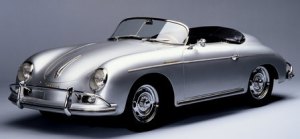 Porsche 356
Porsche 356At the same time, he also started working on his own car. Both Porsches designed many cars for others, but a car bearing their family name did not appear until 1950, that was the 356. The car was designed with reliability and price very much in mind. For cheap and reliable sourcing of parts, the rear suspension and engine were carried over from Volkswagen Beetle. However, the air-cooled engine received some modifications, hence more power.
The car turned out to be more popular than expected, thanks to its elegant build and good look. During its production run of 15 years, some 76,000 cars were produced. Anyway, the Volkswagen root prevent the car from upgrading any more, so Ferry Porsche started working on an even faster, better and more expensive model, 911, which was launched in 1964.
First to be noticed was the use of Porsche’s own boxer engine, now with 6 cylinders and a full 2-liter displacement, and its own synchromesh 5-speed gearbox. The car was styled by Ferry’s eldest son, Butzi Porsche. As you must know, the 911 achieved even greater success with 400,000 units built in the following 34 years. It was also regarded as the most successful sports car in history.
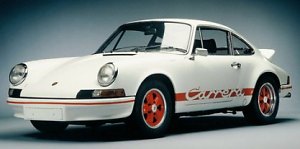 Porsche 911 Carrera RS 2.7
Porsche 911 Carrera RS 2.7The 911 received many updates and upgrades through the years. However, there were times the company itself thought the car could be no longer upgraded. That called for a successor to be developed in the early 1970s. That was the front-engined, V8-powered 928. When it was launched in 1977, it won the European Car of The Year award. However, the company soon realised that the car was too heavy and too expensive to be a real successor to the 911. Therefore it gradually evolved into a luxury Grand Tourer.
At the same time, a smaller car called 924 was being developed as a reaction to oil crisis. The front-engined 2+2 was powered by a 2-litre inline-4. Launched in 1976, it became a hit. In later years it was further developed into 944 and then 968 until the final curtain dropped in 1995.
As a result, from the late 1970s to the late 80s, Porsche had its golden years with a model line up consisted of a trio - the four-cylinder 924 / 944, the six-cylinder 911 and the 8-cylinder 928. Its sales peaked in the mid-1980s with 50,000 cars delivered.
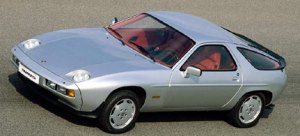 Porsche 928
Porsche 928Right after the peak was several years of sales slump, mostly due to the rising Deutsch mark and high salary which made Porsche's cars too expensive to be affordable, especially under the stiff competition from Japanese coupes. The outlook once became so poor that the company was struggling for survival. Both the 928 and 924 were too old and had to retire. A 4-door sports saloon, codenamed 989, was developed as the successor to the 928, but the top management thought the expensive car was too risky - if it fail, the company would have got into bankruptcy. Therefore the 989 project was axed at the last minute although the development had nearly finished. That was the darkest days for Porsche.
The turning point came when Wendelin Wiedeking arrived in 1993 as the new CEO. He decided to build a cheaper and smaller roadster called 986 Boxster. It would share one-third components with the all-new generation 911 (codenamed 996) hence made a lot more business sense. Besides, Wiedeking introduced Toyota-style clean and efficient production process to increase productivity while reducing costs. Both Boxster and 996 were received well by the market right from the start. In addition to the softened Deutsch mark and the burst of Japanese bubble economy, which killed most rivaling Japanese coupes, Porsche turned to profitable again.
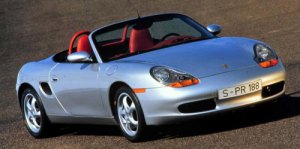 Porsche 986 Boxster
Porsche 986 BoxsterLater on, Wiedeking made a controversial decision to enter sport utility market with a new 4x4 called Cayenne. It arrived in 2002 and quickly became the company's best seller. Porsche's profit rocketed and consistently returned the industry's highest profit margin in the following many years.
Part of the Cayenne success must thanks to the cooperation of Volkswagen group. Since the early 1990s, the Porsche family had a member holding the top job at Volkswagen group. His name is Ferdinand Piech, the grandson of Ferdinand Porsche, the son of Anton Piech and the nephew of Ferry Porsche. He was also the chairman of board in Porsche. The family interests led to the close partnership between the two German companies. Volkswagen produced its version of Cayenne called Touareg using the same platform. Without the cost sharing, Porsche Cayenne would not have been feasible.
The partnership strengthened when Porsche started buying stakes of Volkswagen group in 2005. As of early 2009, it already acquired a controlling 50 percent. Unbelievably, the biggest German car maker became a subsidiary of the smallest (but wealthy) German car maker ! Nevertheless, the joy didn't last too long. As a result of credit crunch, Porsche could not refinance the substantial debt it acquired to buy VW. By the year end, it had to accept a counter-takeover by Volkswagen and lost its independence.